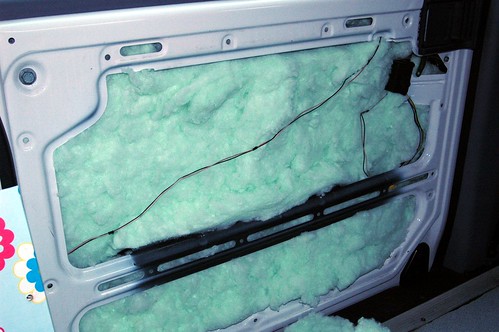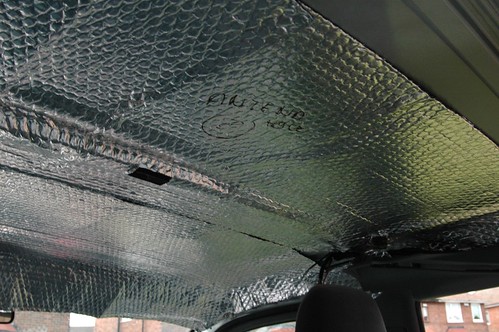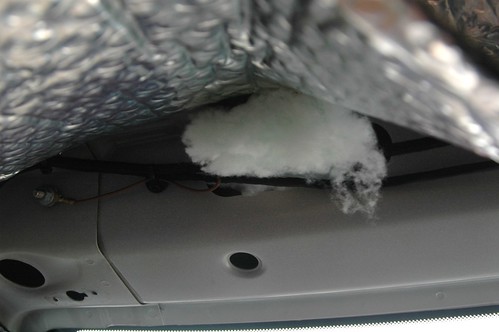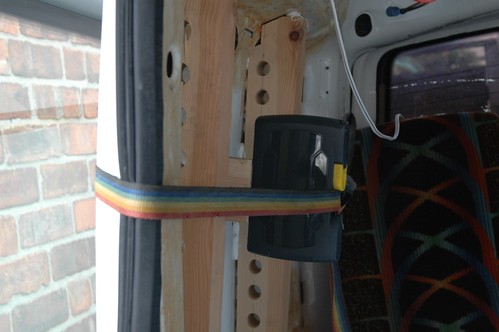I installed the skylight back in June. It's the smallest Fiama: it needs a 28cm square cutout. It sits near the cooker, on a flat part of the roof.
To cut the roof, I lay a sturdy plank and a ladder over the roof bars. I then drilled a hole in each corner and used a pair of nibblers for the straight cut:


I used sika 221 to glue the skylight in place and to glue soem re-inforcing wooden battens on the inner side of the roof. I re-fitted the ceiling, then finished the instalation by fitting the bottom part of the skylight. I do not have a picture, the a cross section would have shown: top part of the skylight, sika, metal roof, sika, wooden batten, original roof, bottom part of the skylight with screws linking the top and bottom parts.
This failed during our holiday in the Alps. The skylight leaked badly during a stormy night. It turned out that the skylight was not glued to the outer bed of sika! Once I removed the screws holding the bottom of the skylight, the top just lifted off from the roof with no effort!
We retreated to my parent's in sunny south of France to escape the rain, to dry and to repair the van. A local caravan specialist sold me this:

No brand name, but it's the mastic he uses to replace skylights. He buys it in rolls of 12m, and was happy to sell me 1.5m. He didn't know of sika 221, in fact he thought I had just used silicon sealant. To be honest, by that stage the sika looked like silicon sealant!
Most importantly, he thought that I had made a mistake when I installed the skylight. He advised me to build up the wooden batten so that when tightening the skylight screws, the top and bottom parts would compress the solid battens not the vito's ceiling, which is made of foam. Here are the extended battens:

I then laid the mastic around the top skylight, and fitted it. I had to enlarge the foam ceiling cutout, and it doesn't look as tidy now that it isn't fitted under the bottom skirt of the skylight. But so far, it hasn't leaked.

























